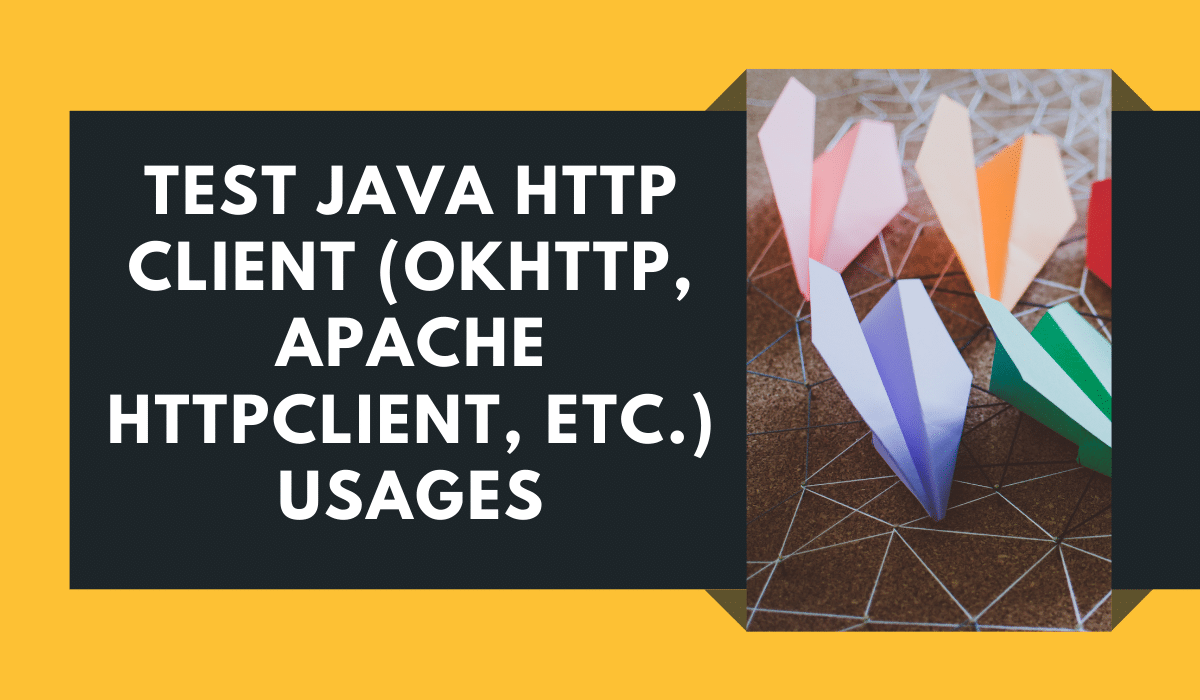

#Java http client software#
As software developers, we know how many problems are. HttpClient client = HttpClientBuilder.create().setDefaultRequestConfig(config).setDefaultHeaders(headers).build() Sharing of occasional problems encountered in using HTTP Client in Java. setSocketTimeout(timeout * 100).build() In the ClientThread, the first thing is to enable the cipher suites you want to use. Then it will connect to the server and a new ClientThread will be spawned to handle the SSL connection. setConnectionRequestTimeout(timeout * 100) HTTPS client The HTTPS client is similar to the HTTPS server created above, It will first setup the SSL client with the correct keystore and truststore. RequestConfig config = RequestConfig.custom() It would be a best practice to set a timeout threshold to your request. As you can see, there are many predefined values. HttpHeaders class gives you the ability to use the most common content type by its static variables. HttpClient client = HttpClientBuilder.create().setDefaultHeaders(headers).build() HttpHeaders.CONTENT_TYPE, "application/json") The setDefaultHeaders method takes a Collection as a parameter that’s why you need to create a pass a List of Headers. Let’s add Content-Type header to that request.

String responseBody = EntityUtils.toString(response.getEntity()) For this, you need to use EntityUtils so you can extract the body from the response object. Thread safety of HTTP clients depends on the implementation and configuration of the specific client. Int statusCode = response.getStatusLine().getStatusCode() ĪssertThat(statusCode, equalTo(HttpStatus.SC_OK)) HTTP clients encapsulate a smorgasbord of objects required to execute HTTP requests while handling cookies, authentication, connection management, and other features. We created a HttpClient object then executed a GET request. HttpResponse response = client.execute(new HttpGet(""))

HttpClient client = HttpClientBuilder.create().build() compile group: '', name: 'httpclient', version: '4.5.7' Making a Basic GET Request You need to add below dependency into your project. Let’s see how HTPPClient 4 version is working with basic examples. RestAssured or any other API automation library is a wrapper built on top of HttpClient. So we decided to tell you a bit about HTTPClient 4. But what happens when we make a get request? What’s going on underneath of it? Do you know? Some of us know some of us don’t know. We are using many API automation libraries like RestAssured. We found the following example, which works: import : private static final HttpClient httpClient HttpClient.newBuilder().version. Now we want to write about the HTTPClient API. So we started to wring about Java 8 stuff like File APIs and DateTime APIs. We mostly provide articles on testing but there is a lot to explore on development ecosystem.
#Java http client how to#
Once you are done with a client you should close this socket and get ready to accept the new incoming connection by calling accept() again.In this article, we will learn how to do the GET request by using the HTTP Client. As soon as a client connect it returns the Socket object which can be used to read client request and send response to client. This is a blocking method and blocks until a client connects to the server. In Java, you can accept incoming connection by blocking call to accept() method, as shown below :
#Java http client code#
Now let's write code to start accepting connections. Do you see the while(true) loop? Any guess why we have that? This allows us to keep our program running, without this infinite loop our program will finish execution and the server will be shut down.


 0 kommentar(er)
0 kommentar(er)
